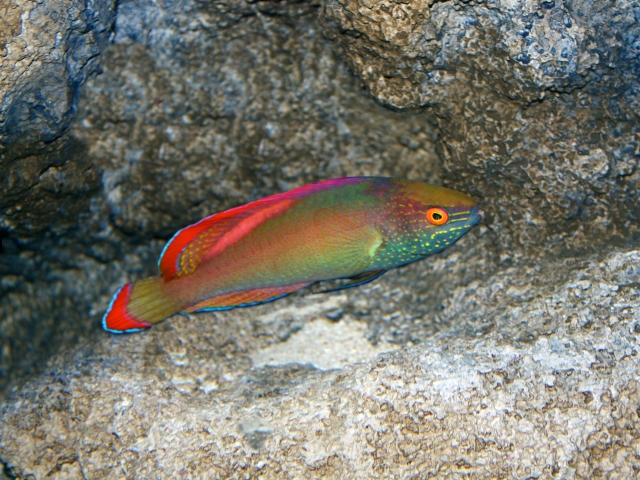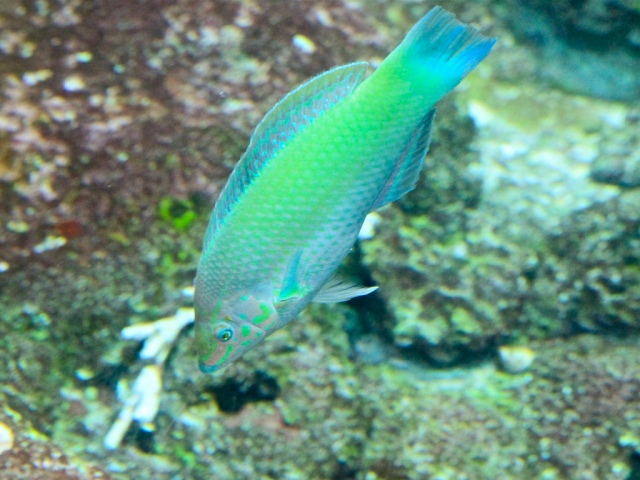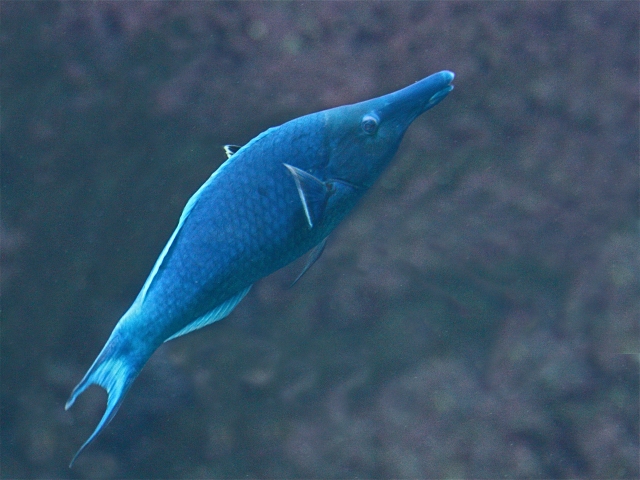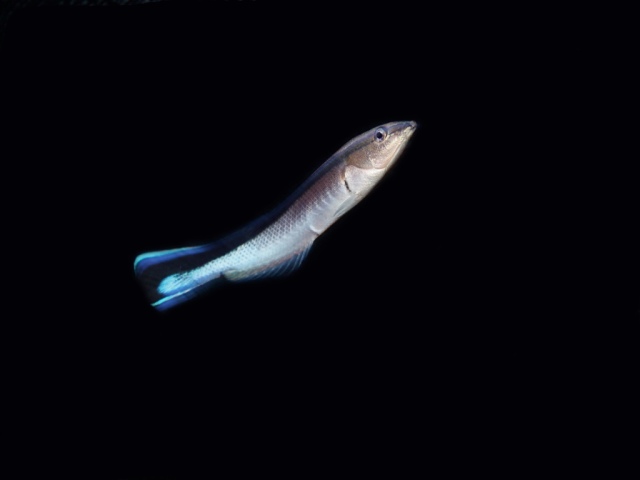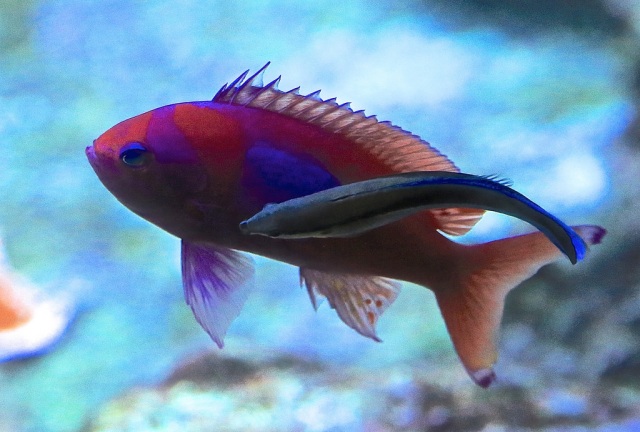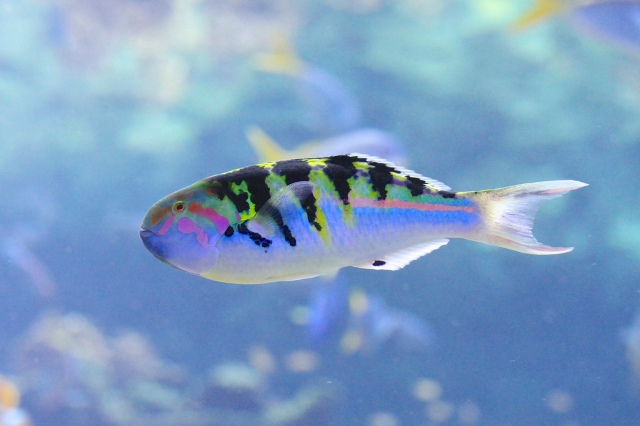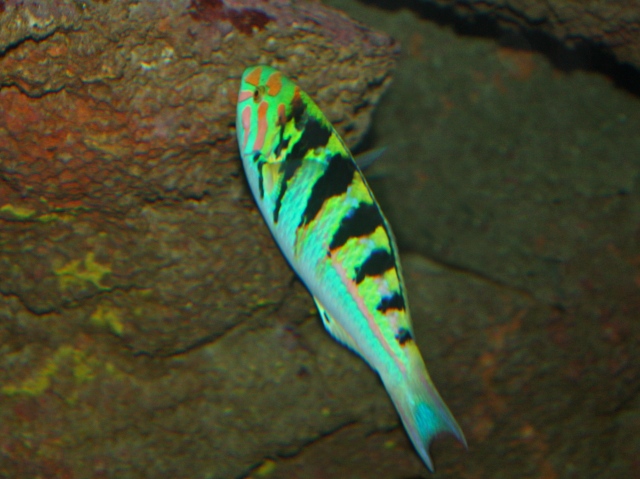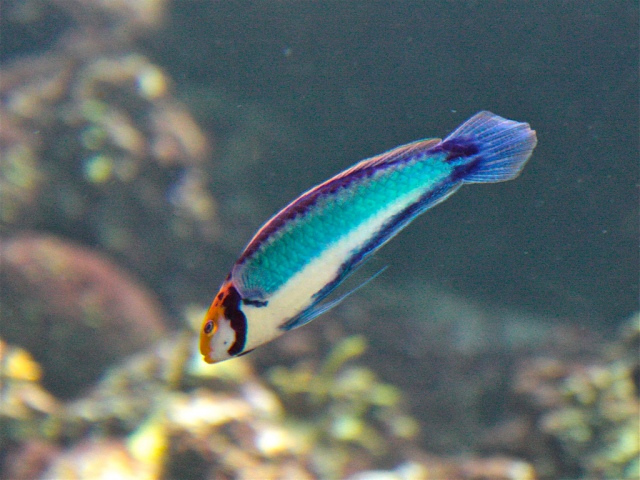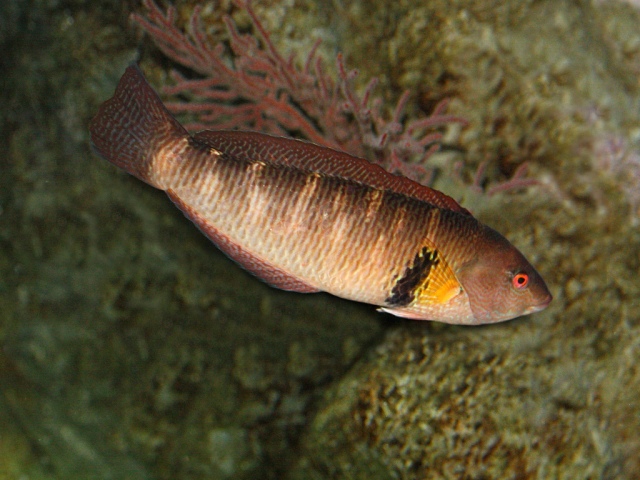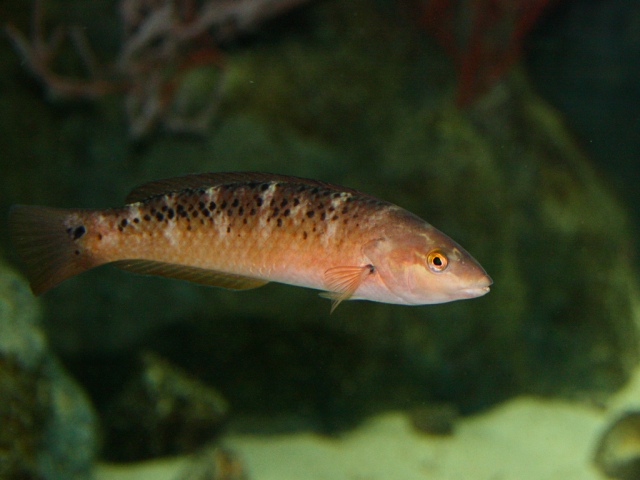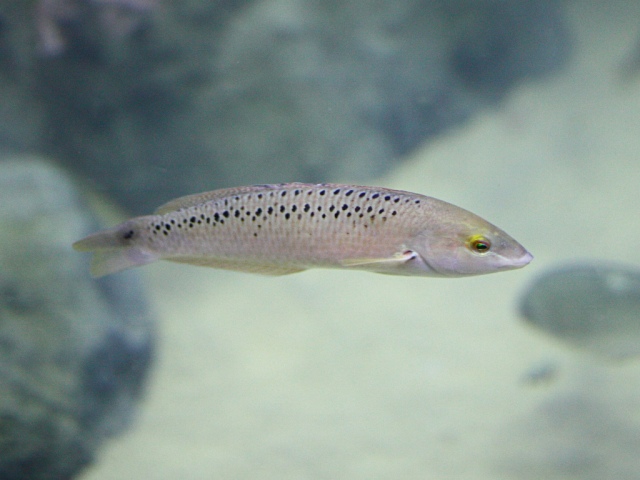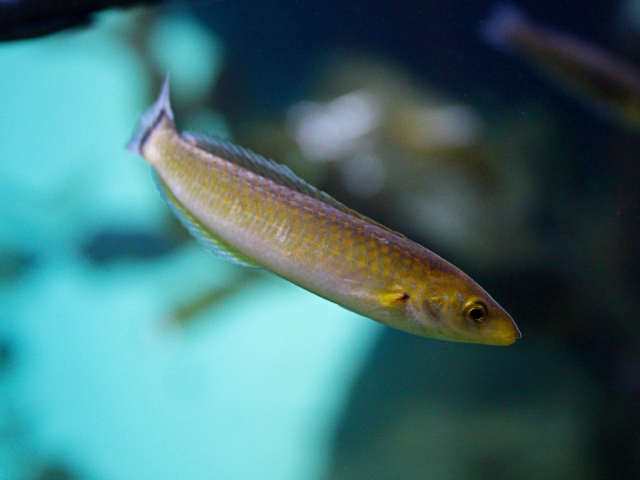TAXONOMY
Kingdom: Animalia
Phylum: Chordata
Class: Actinopterygii
Order: Perciformes (Perch-likes)
Family: Labridae (Wrasses)
Genus/species: Halichoeres richmondi
GENERAL CHARACTERISTICS: They have stunning horizontal chain like stripes going down the full length of their bodies. Male Richmond’s Wrasses tend to be more blue and green in color while females are more orange. Juvenile Richmond’s Wrasses have eye spots on their dorsal fins as well.
Length up to 17 cm (6.7 inches)
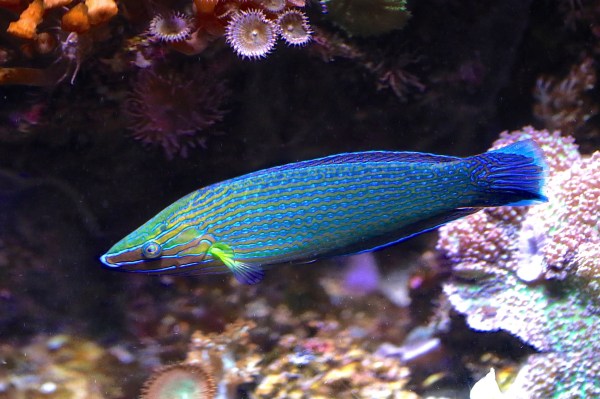
DISTRIBUTION/HABITAT: Richmond’s Wrasse are found in the Western Pacific from Java to the Philippines inhabiting shallow lagoons and coral reefs, up to a depth of at least 20 m (65.5 feet).
REPRODUCTION: Pair during spawning
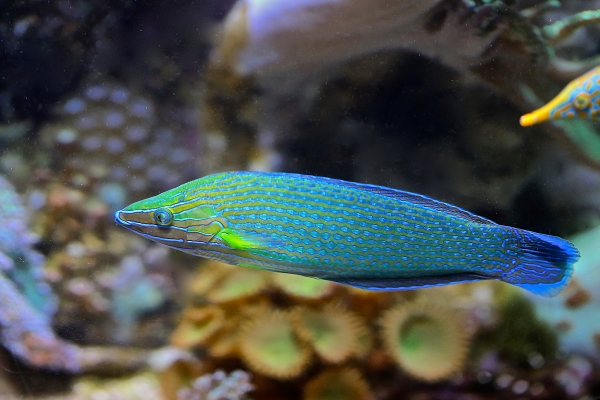
REMARKS: Wrasses are most easily identified by their pointed snouts and prominent canine teeth that protrude in front of the jaw. Other common characteristics include their form of propulsion, which depends mostly on the winglike motion of the pectoral fins with only an occasional burst of speed provided by the caudal fin.
CONSERVATION: IUCN least concern.
References
Ron’s flickr https://www.flickr.com/photos/cas_docents/35513954125/in/album-72157629304397467/
California Academy of Sciences Steinhart Aquarium Animal Attractions Rich Ross 2017
Ron’s WordPress Shortlink http://wp.me/p1DZ4b-YM
fishbase www.fishbase.se/summary/Halichoeres-richmondi.html
IUCN www.iucnredlist.org/details/187507/0
EOL eol.org/pages/212051/details

